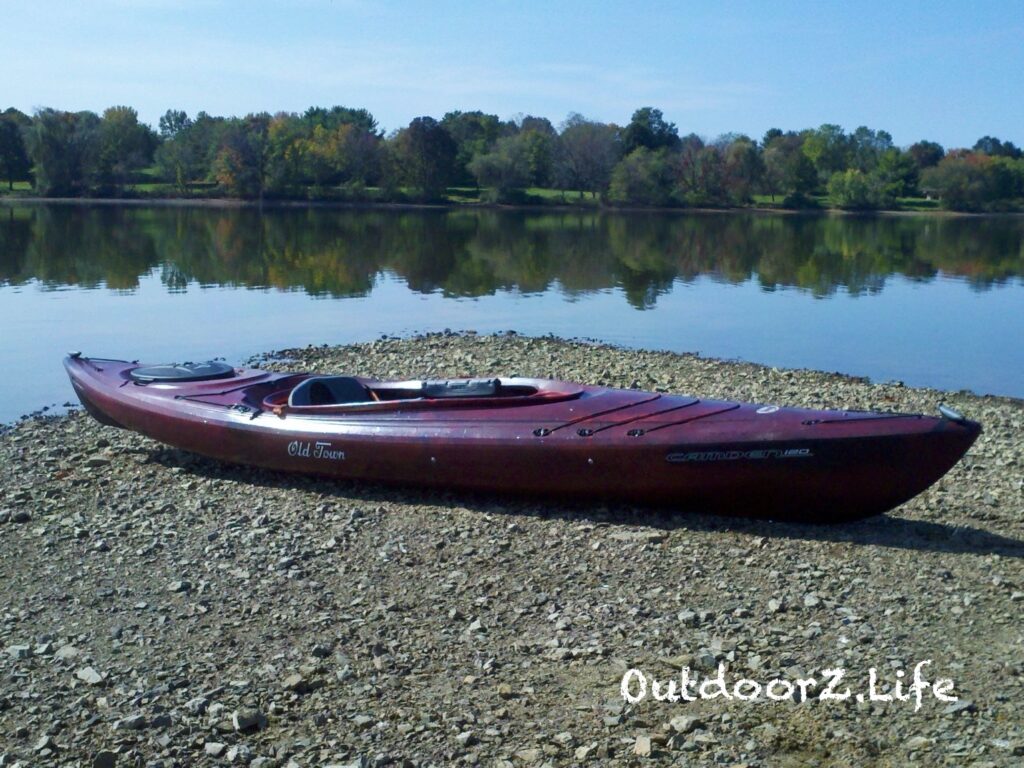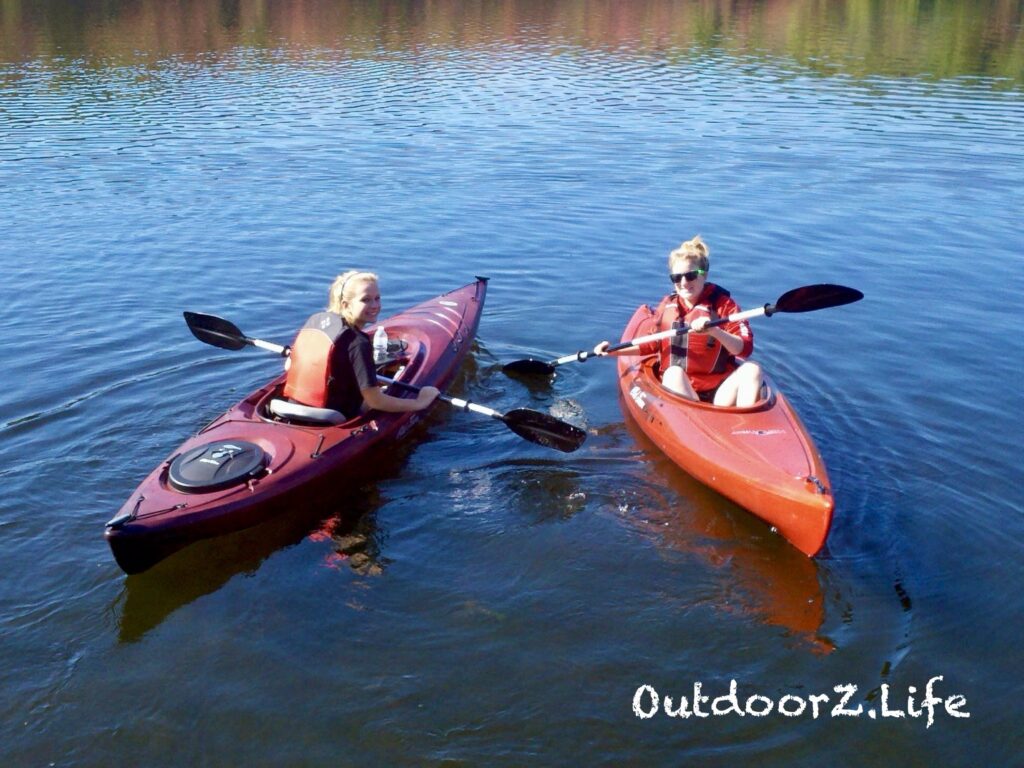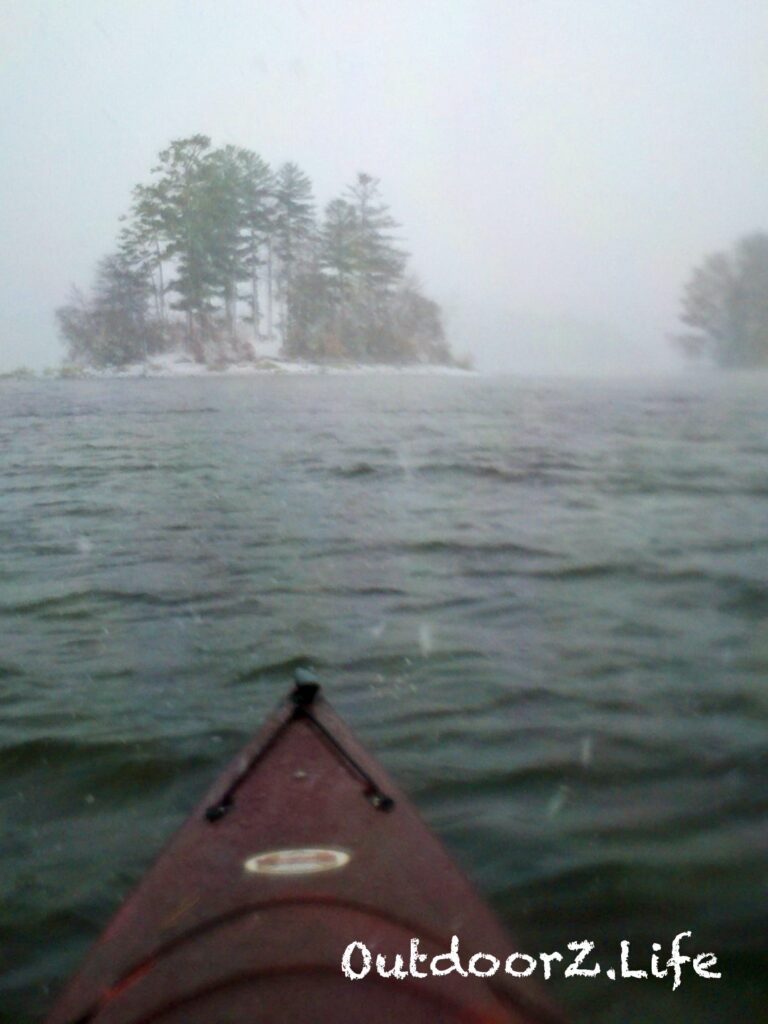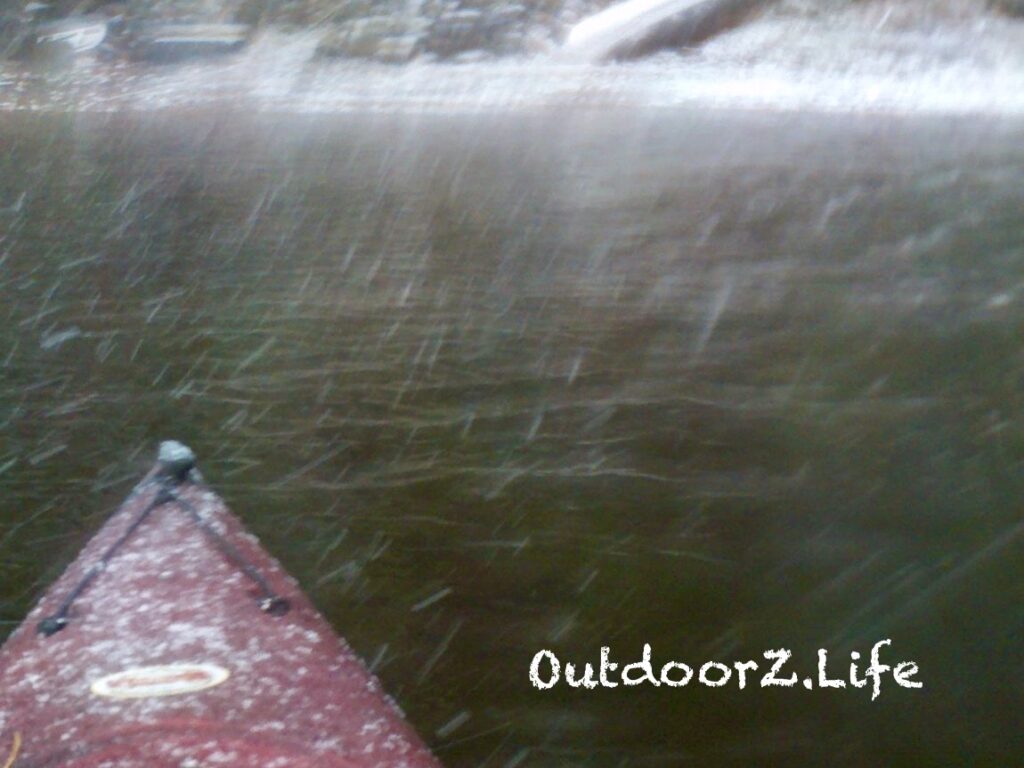Whenever you go kayaking, you need to be prepared for the weather and water conditions. If you don’t have the right gear, the consequences could be serious. Here’s what you need to know about kayaking in warm weather vs. cold weather.

Kayaking in Warm Weather: The Risks and Benefits
Many people consider kayaking to be the perfect warm-weather sport. When the weather is pleasant, you don’t have to have a lot of specialized gear. If you have a sit-on-top kayak, you can even get out and swim to cool off! However, warm-weather kayaking has its own risks, especially when it gets hot. Here are some of the potential risks:
- Dehydration
- Sunburn
- Eye fatigue from sun glare
- Heat exhaustion
- Hypothermia

Plus, warm weather can make it easier to underestimate water temperature. Lakes and rivers can still be icy-cold during the heat of summer. If you capsize and end up having to swim, you could still be susceptible to hypothermia despite the warm air temperatures.
Preparing for Warm-Weather Paddling
The hotter the weather, the more water you’ll need to bring along. The last thing you want is to get fatigued from sun and dehydration when you’re away from shore. Sun protection is crucial, so wear breathable, lightweight clothing that will keep you cool and protect your skin from UV rays.

On sunny days, you will need a good pair of sunglasses to protect your eyes from the sun’s glare reflecting off the water. Many people also wear a sun mask on particularly bright days. Sunscreen and a hat are highly recommended, too!
And lastly, it’s important to note that even in the warmest weather, the water can still be dangerously cold. It’s a good idea to carry a change of clothes and a towel in a dry-bag just in case. This will provide a way to get warm and dry if you end up in the chilly water.
Kayaking During Cold Weather: The Risks and Benefits
Don’t overlook the cooler months when it comes to kayaking! You can still comfortably enjoy the fun of paddling on chilly days, though you’ll need to be prepared for the risks of cold weather and the icy-cold water that accompanies this weather. Here are some of the most serious risks of kayaking in cold weather:
- Cold shock
- Hypothermia
- Swim failure
Keep in mind that weather conditions like rain, wind, and snow can accelerate these risks even more.

Preparing for Cold-Weather Paddling
There are some great benefits to cold-weather kayaking! The autumn and winter scenery is beautiful, and you’re less likely to have your view obstructed by other people when the weather is chilly. Just make sure you are prepared to face the weather conditions.
Do not go kayaking in cold weather unless you have the proper gear! A drysuit is essential because it will keep you warm if you end up in the cold water. Be sure to get a drysuit that is made for kayaking, because otherwise, it could restrict your movement. Under your drysuit, wear warm thermal layers. This will help keep your core temperature stable.

Be especially careful to keep your extremities warm with good footwear, gloves/mittens, and a warm hat. If you want, you can get a pair of pogies. Pogies are insulated paddling mitts that attach to your paddle and keep your hands warm and cozy.
For more tips on kayaking in cold weather, visit an article by Paddling.com.
Kayaking Safely, All Year Round
We hope this encourages you to get out there and get kayaking, no matter the temperature outside! Stay safe and have fun!
See where this story/article ranks in popularity: Top 10 List
